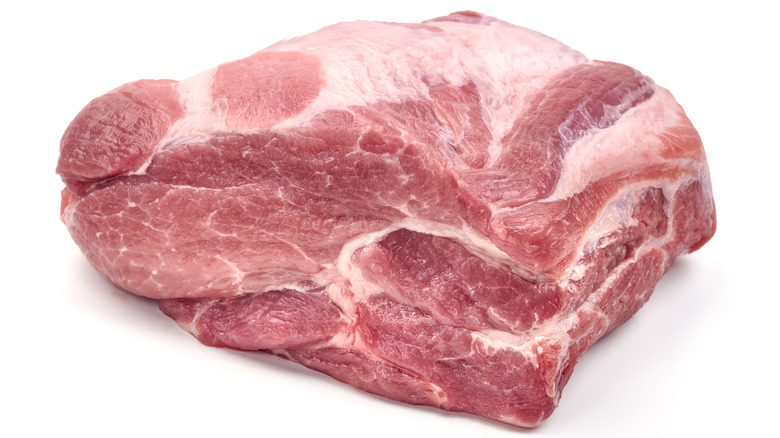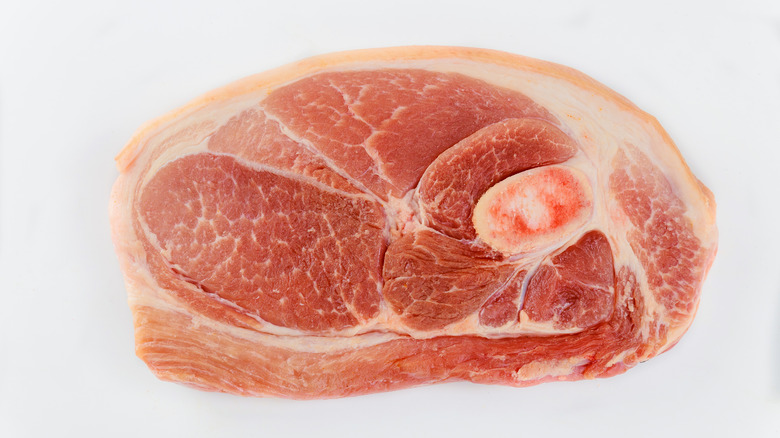Pork Butt Vs. Pork Shoulder: What's The Difference?
In our ranking of the best cuts of pork, we gave the coveted top spot to the butt. Why's that? Well, for starters, it has the best marbling (fat distribution) of any pork cut, making it intensely flavorful and tender when properly cooked. It's an inexpensive option as well, giving you great bang for your buck. But perhaps pork shoulder's greatest trait is its versatility. It's the ideal cut for a slow-cooked braise, but it's equally as good for roasting and thinly slicing on a sandwich. But of course, you can't talk about pork butt without addressing its name.
Pork butt. It's a name that either makes your child say "eeeewwwww" or burst out laughing. Neither is the ideal reaction to dinner. Southern Living clarifies that the pork butt actually comes from the shoulder, while the rear end is the source of ham. The term 'butt' comes from colonial times when the cut was believed to be of lower quality (they must have never tried pulled pork). Butchers would often ship less desirable cuts elsewhere, packing them in barrels. At the time, these types of barrels were known as 'butts.' Many of these shipments came out of New England, which is why pork butt is also known as 'Boston butt' (though Southern Living expresses skepticism about this claim). Regardless of how the name came to be, it begs the question — if the pork butt is actually the shoulder, what is the 'pork shoulder' you see at the butcher?
They are different parts of the shoulder
Pork is butchered in two stages, as MasterClass explains. First, the carcass is divided into four pieces known to butchers as 'primal cuts.' They are the rear legs, belly, loin, and shoulder. The four primal cuts are then broken down into subprimal cuts, which include familiar favorites like spare ribs and tenderloin. The pork shoulder is divided into two subprimal cuts, one called the butt and one that is also known as the shoulder. To differentiate it from the primal cut, people sometimes call the subprimal shoulder a 'picnic' shoulder.
Serious Eats explains that the pork butt is the area above the pig's shoulder blades, immediately behind its neck. The picnic shoulder comprises the rest of the front leg, everything between the butt and the foot. It's easy to tell the difference when you see them in a butcher case, as the shoulder is typically sold bone-in and skin-on, unlike the butt. Per Serious Eats, the area above the shoulders isn't used much for physical activity, unlike the lower legs. Therefore, pork shoulder is leaner than pork butt. Pork butt has the advantage of better marbling, making it more tender, but the shoulder is the best choice when you want crispy, crackling skin.

